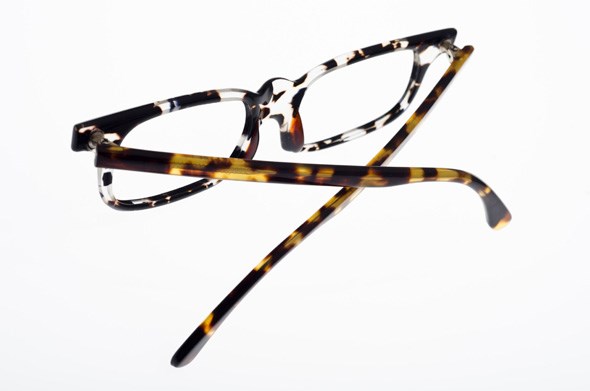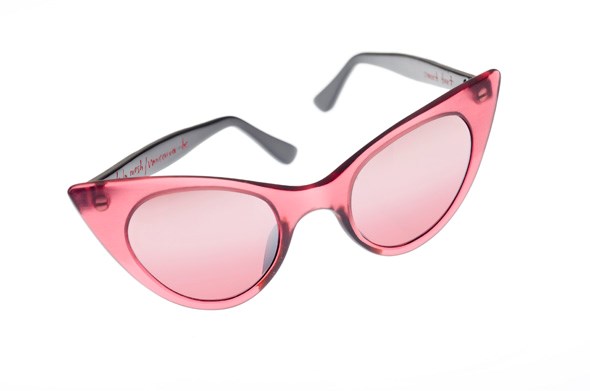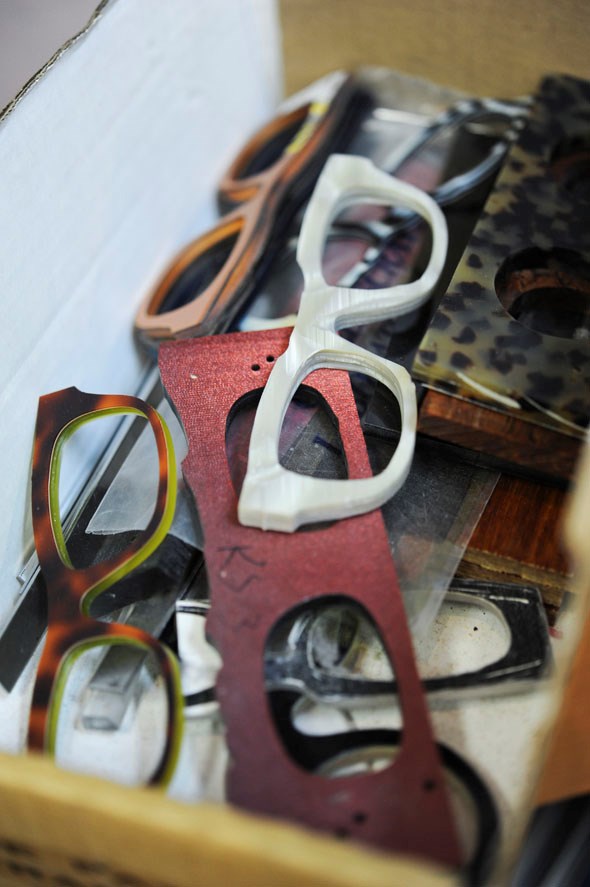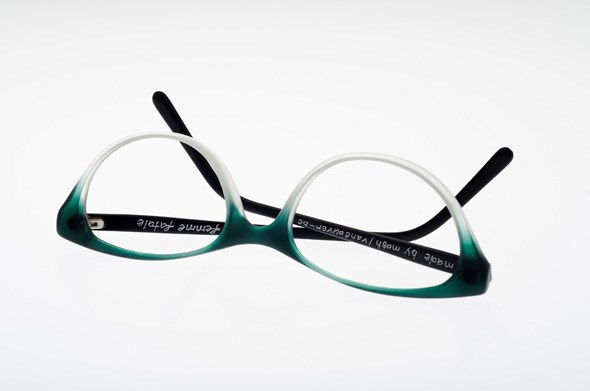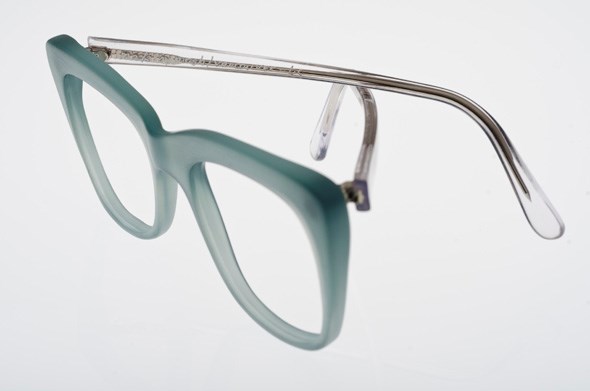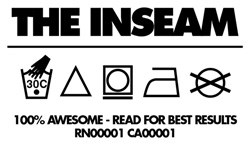 |
Vancouver is home to a thriving fashion industry made up of individuals committed to its growth and success. Get to know these personalities in The Inseam and discover what makes the Vancouver Fashion scene so awesome. |
Photos: courtesy Eyeland Framemakers
Sara Moshurchak is an expert in the art of designing and creating stylish, quality eyewear and is also the woman behind Eyeland Framemakers. Specializing in custom eyewear, the company prides itself on traditional production methods by hand making each piece. The result is a one-of-a-kind design that can incorporate unique elements like gold, silver, wood, antique tortoise shell, leather and even hair.
While the company has its roots on Granville Island, a recent move to Gastown has inspired a space conducive to growth, complete with a retail shop, studio and optical lab. I caught up with Sara to discuss her recent move and learn more about frame making.
Valerie Tiu: You came into this business after attending a seminar led by German eyewear designer, Klaus Sebök. Can you describe this experience and how it inspired you?
Sarah Moshurchak: I was going to school to become an optician when Klaus came and did a seminar on soldering and making frames. I literally turned to my friend and said, “I’m going to own that business someday.” I started working for Klaus in 2000 and then in 2008 I bought the shop from him when he retired. So I worked for this company for almost 15 years.
VT: Why is eyewear so important to you?
SM: I’ve worn glasses since I was seven years old and majority of my family wears them so it’s been a dominant thing in our lives for a really long time. I was thinking of going to school to become an optometrist. I come from a family of mechanics, woodworkers, designers and things like that so I’ve always enjoyed making things. Instead of going the more medical route, I wanted to find something where I could make things and use my hands, so becoming an optician was a perfect fit.
VT: Can you take us through your design process?
SM: We’re really old school, we don’t use any computerized machines; everything is done using the old way of making frames. We start out by sitting down with the clients and looking at some designs. They usually have an idea of what they’re looking for, so they come in with some pictures and we try on a few of the frames that we have in the shop so we have an idea of what they like. Then I start with the sketching where I cut out sample patterns for them to try. It usually takes a couple of days of back and forth until we nail down the design.
I transfer that piece of paper onto a piece of material and then I use a handsaw to cut it all out and then with a series of files and sandpaper, we sand it and smooth it. It’s always easier to do one side, but then getting the left side to match the right side is where a lot of practice and skill comes in. No custom frame is going to be perfect or be completely symmetrical. I think that’s part of the charm of getting something that handmade.
Once the front is all done and it’s been polished, we put in the little metal hinges, make the temples and then assemble it all together. We’re actually one of the few stores that actually do their own lens cutting as well. To do a total one-off custom frame, it probably takes me about 20 hours.
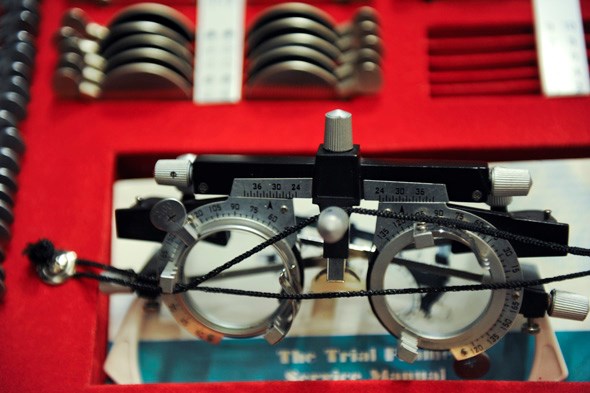 Photo: courtesy Tracey Ayton
Photo: courtesy Tracey Ayton
I also produce my own collection where I’ve got my patterns that have already been made. I’ve got about ten shapes and in our shop we have drawers with all of our materials in it. If you want them done in another colour or another pattern, they take about ten hours to make. So we have that way and the bespoke way too. It’s always a bit of a leap of faith on the client’s part -- it’s hard to imagine how that piece is actually going to look. So there’s a lot of trust that takes place in that process. But its so much better in the end – when they see it and it’s done and their lenses are in there.
VT: What kind of materials do you use?
SM: I mostly use acetate, which is what most high quality frames are made of. When bigger companies get it, they get it in these massive sheets that are about eight feet by four feet where they can make 100 pairs out of that same material piece. This company ends up with these end pieces that are too small for anybody to use, so I just end up buying their end pieces. A lot of the colours have been discontinued and you can’t get them anymore so they’re rare.
VT: What was the most memorable pair of glasses that you have ever made?
SM: I did a pair for my hairdresser. He took some of his hair clippings and we pressed it in between some clear sheets of acetate. On the left side it was dark hair and as the frame faded to the right side, the hair got lighter and blonder. You can do so many things that I haven’t even thought of yet. We can silk screen and add feathers and lace and silk and there’s endless possibilities.
VT: You recently moved from Granville Island to Gastown. Can you talk about your new space?
SM: Our new location is much bigger than our old one. My lease was up on Granville Island and when this space became open, it was perfect. It’s nice because we can have a flow here -- we have a designated zone where the design is done, where cutting is done and where the lenses are cut. It’s just a more spread out operation which is better and the biggest thing is that we have room to grow here. Whether it’s increasing the retail or production part of the business, it’s just nice to have that flexibility to be able to accommodate either one. I love Gastown – there’s just so much creativity, character and style here. It makes sense for us to be here.
